Estimated reading time: 7 minutes
I love hitting the target where I intend, but more than that, I hate missing. The only surefire way to never miss again is to never take another shot. However, if we develop solid fundamentals, learn, and abide by the limitations of our skills and gear, none of us ever need to miss.

Learning Not To Miss
My first shooting experience was with a Benjamin .177 pellet rifle. Its pump had fallen off a generation earlier and was repaired with a bent nail in place of the missing pin. The rear sight was also lost to history. This rifle taught me two valuable lessons. First, I needed to get as close as possible to my target to improve my chances of hitting it. Second, I learned the importance of consistently placing my cheek on the stock the same way every time.
I later graduated to a single-shot .22 bolt-action rimfire rifle that my grandfather used during the Depression. According to his journal, a squirrel was worth just one penny more than a .22 bullet. Missing was not an option for him.
Shooting with rimfire rifles brings me absolute joy. The ammunition is more affordable than centerfire, the guns are quieter, and the recoil is minimal. The best shooters in the world will tell you that practice, quality practice, sets them apart from those who don’t make it to the podium. Practice doesn’t make perfect; it makes permanent.
For years, I searched for a rimfire rifle that felt like my hunting rifle. I even invested in a conversion cylinder to shoot .22 rimfire through a Ruger No. 1 chambered in .22-250, which turned out to be a poor use of money. Over time, rifles started to take on different forms, with pistol grips, handguards, rails, and adjustable stocks becoming the norm. Manufacturers found ways to create rifles with the same action that could fit into chassis systems as well as traditional wood, laminate, or composite stocks.

Volquartsen Precision
Enter the American-made VF-ORYX 22WMR by Volquartsen. This rifle is an absolute beast. The moment I picked it up, I could sense its precision. The modern design immediately caught my attention, but it was the performance that truly impressed me.
The sturdy American craftsmanship is evident in every detail. The ergonomic stock fits perfectly in my hands, providing a natural and comfortable grip. The textured surface ensures control, even in wet or sweaty conditions. With adjustable cheek rest and length of pull options, shooters of all sizes can achieve a personalized fit.
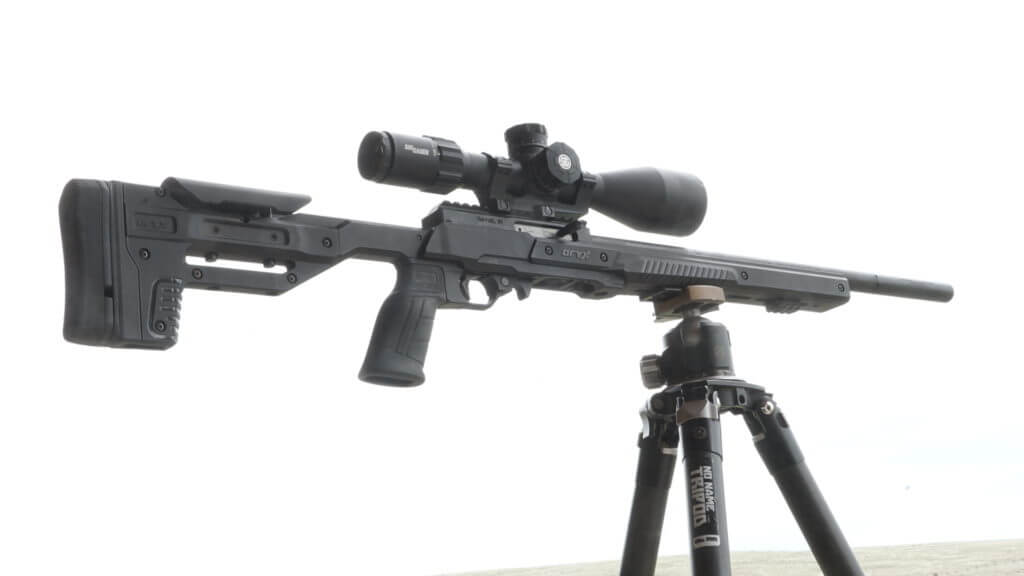
When it comes to accuracy, the VF-ORYX truly excels. Its match-grade barrel consistently delivers exceptional precision, producing tight groups. The crisp trigger pull enhances the shooting experience, allowing for precise shot placement. The rifle’s stability and minimal recoil contribute to consistent aim, resulting in shot-after-shot consistency.
Operating the VF-ORYX is a pleasure. The bolt cycles smoothly, even with the inherent dirtiness of suppressed rimfires. The magazine system is reliable and user-friendly, accepting standard Ruger 10-22WMR magazines, although it only holds nine rounds.
Overall, the Volquartsen VF-ORYX is a top-tier rifle that exceeds expectations. Its combination of craftsmanship, exceptional accuracy, and user-friendly features make it an outstanding choice for both serious shooters and discerning enthusiasts.
When I ordered this rifle, I requested a second stock. With the removal of a single screw, I could switch the action from the chassis to the wood stock, providing a traditional sporter stock feel for practice.
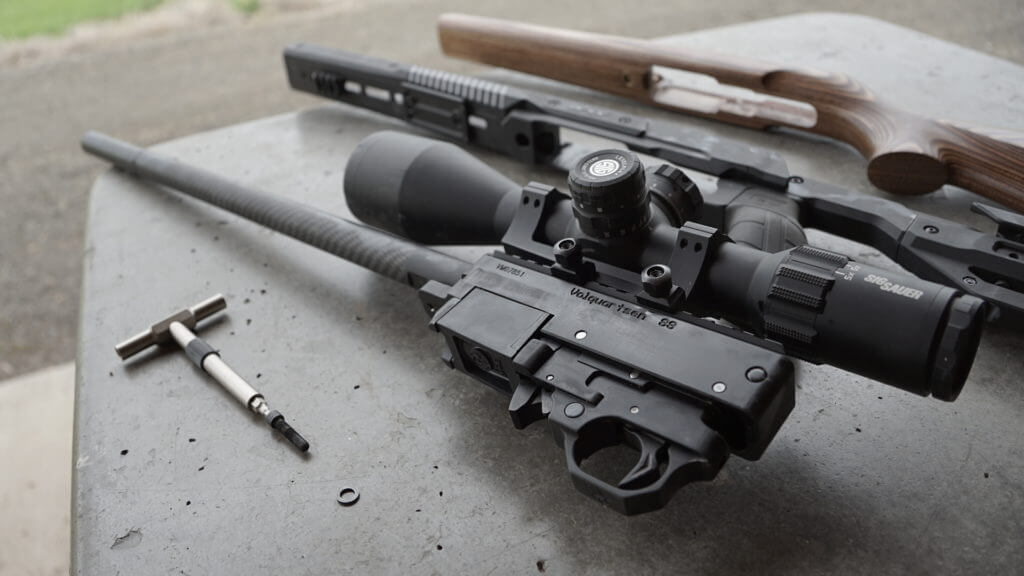
Testing the Gun
The .22 WMR cartridge holds a special place for me. I can purchase a 50-round box for $17. I found that CCI 40-grain rounds performed best in this rifle, achieving a velocity of 1935 feet per second. With a 50-yard zero, I was also on target at 100 yards, making it ideal for small game and range fun. At 400 yards, I needed to hold 8 mRad high to hit a steel target, which accounts for approximately 115 inches of bullet drop.
During practice sessions with this rifle, I shoot from positions I am likely to use in the field, such as standing with a tripod. Prone shooting opportunities are rare in the wild, and conveniently placed bench rests are scarce. I searched for a deer target online, printed the first picture I liked, and marked two small crosses on a separate sheet of paper.
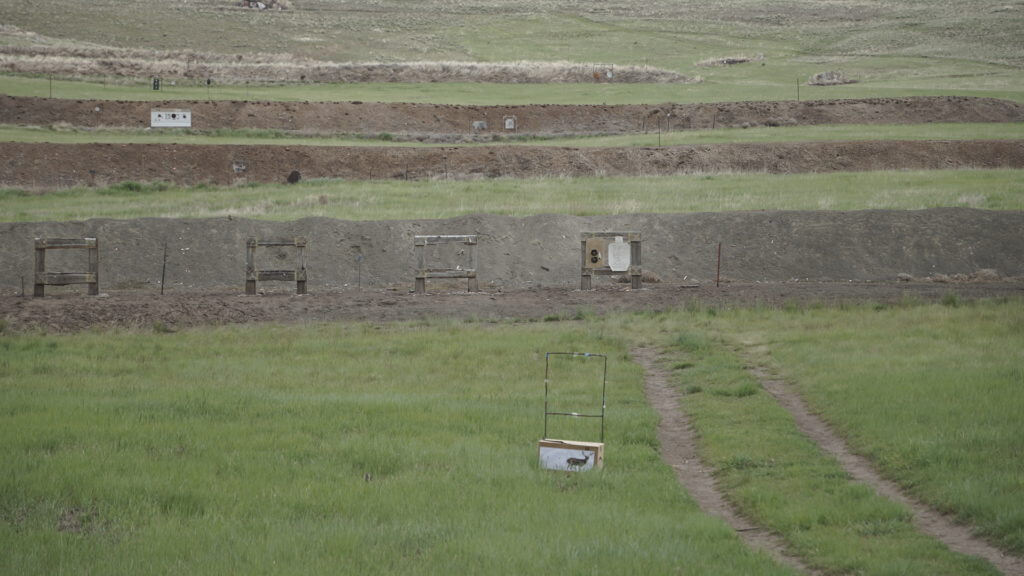
At the range, I stapled the target to a cardboard box and positioned it at the fifty-yard line. My printed deer target measured three inches from belly to back, giving it a 1:6 ratio compared to a real deer standing at 300 yards.
SEE MORE: Volquartsen’s Got the Coolest Takedown Rifle with the VT2
I began by shooting a sight-in X on the blank sheet of paper and then focused on the deer target. I dedicated the next two magazines to improving trigger control. In my opinion, poor trigger control results in more missed shots than anything else. With suppressed rimfire shooting, I can concentrate solely on this aspect of the firing sequence, as recoil and loud bangs are absent.
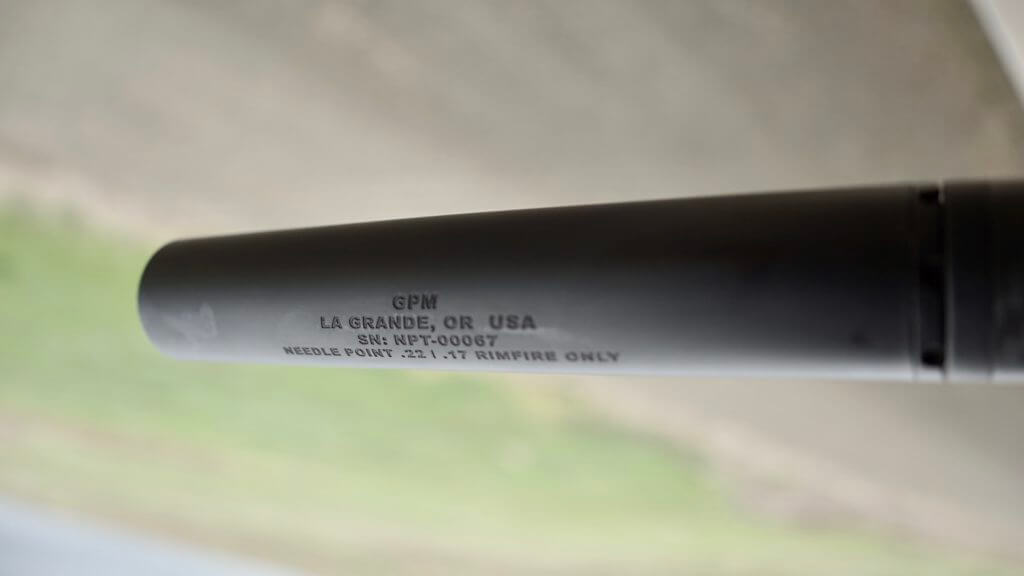
Practice Makes More Or Less Perfect
When firing the rifle, I focus on pressing the trigger like a button, using the same part of my finger each time and pulling straight to the rear without moving the sights off the target. Although it sounds simple, it requires repetition to execute consistently. This is why I prefer practicing with rimfire rifles. For the same amount of money, I can fire 5-10 rounds of .22 WMR compared to a single round of most centerfire hunting ammo. Using the most accurate rifle for practice allows me to attribute any errors solely to myself, enabling me to address and correct any issues.
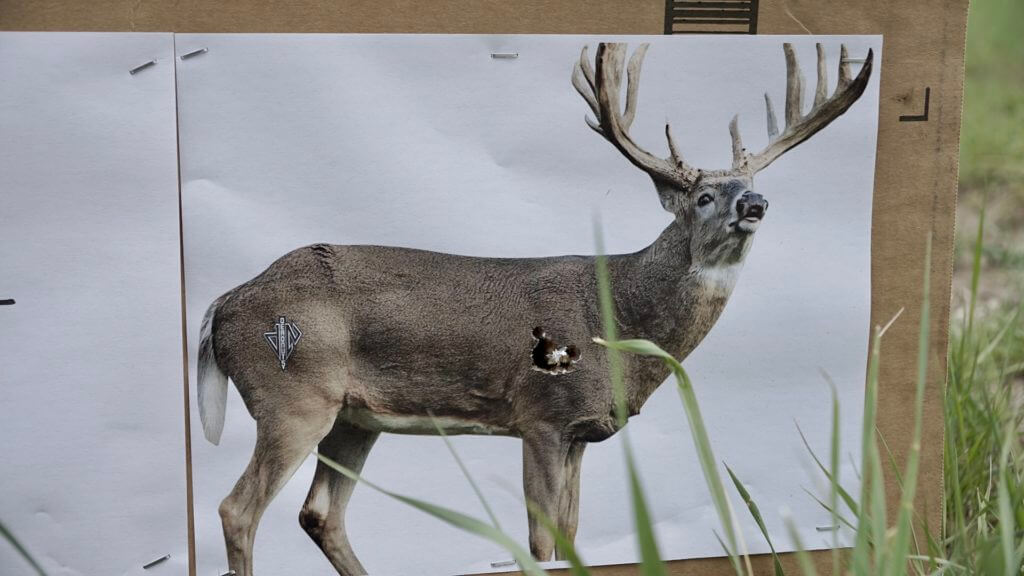
Maintaining discipline, I take breaks between shots. Hunting often comes down to one well-placed shot, and that’s the benchmark I train for. Follow-up shots are important skills, but they are part of another training session. Here, I set up the rifle on the tripod, assume my shooting position, select fire, move my finger onto the trigger and press while maintaining my sight picture, then select safe and step back from the gun. I repeated this process for two magazines and called it a day. No misses. I want to never miss again.